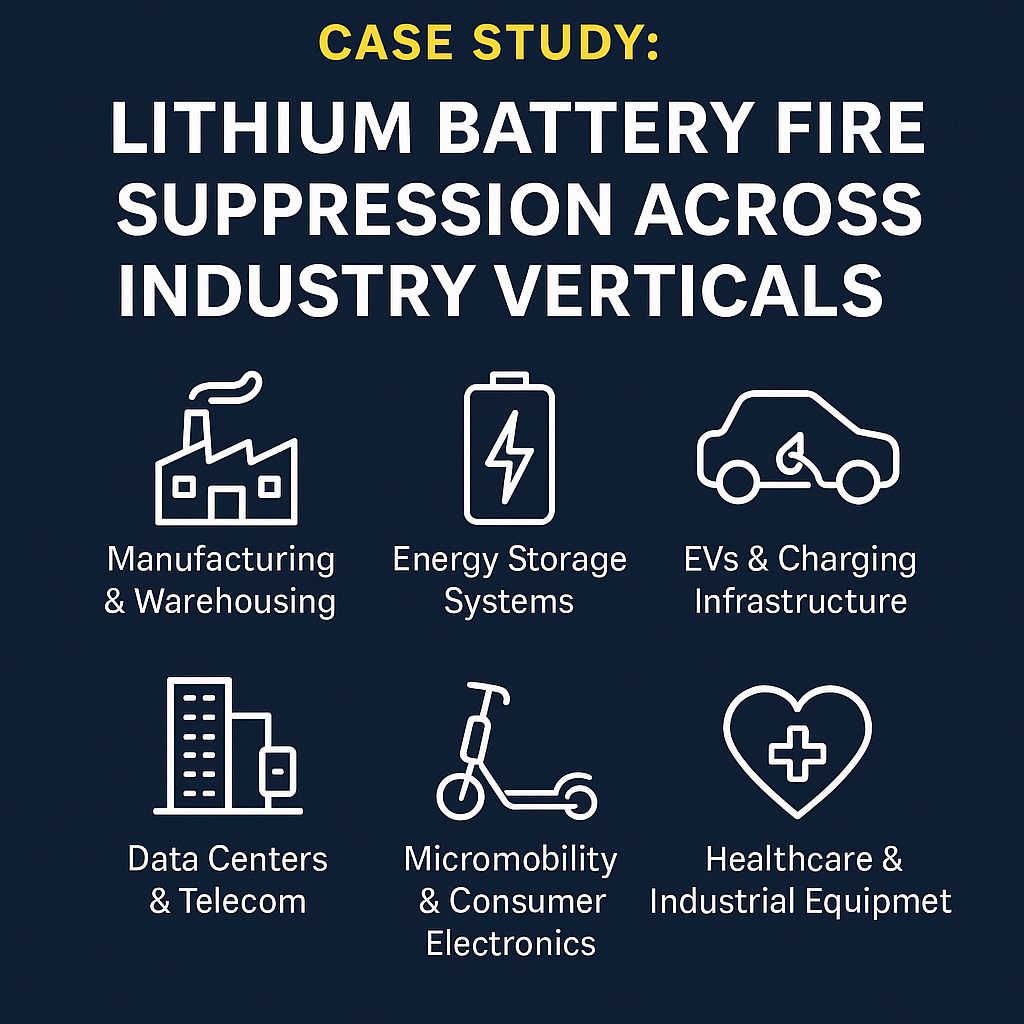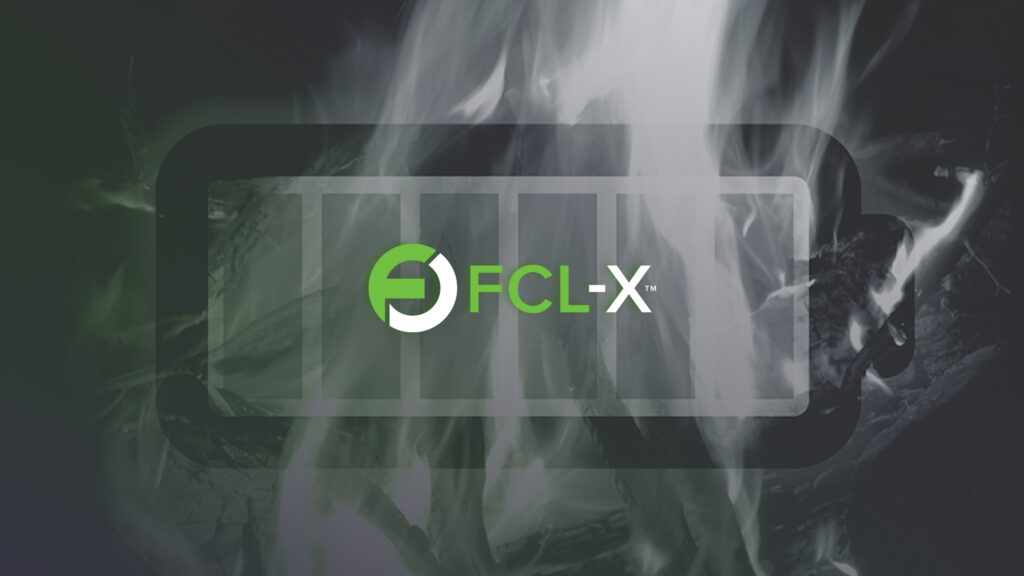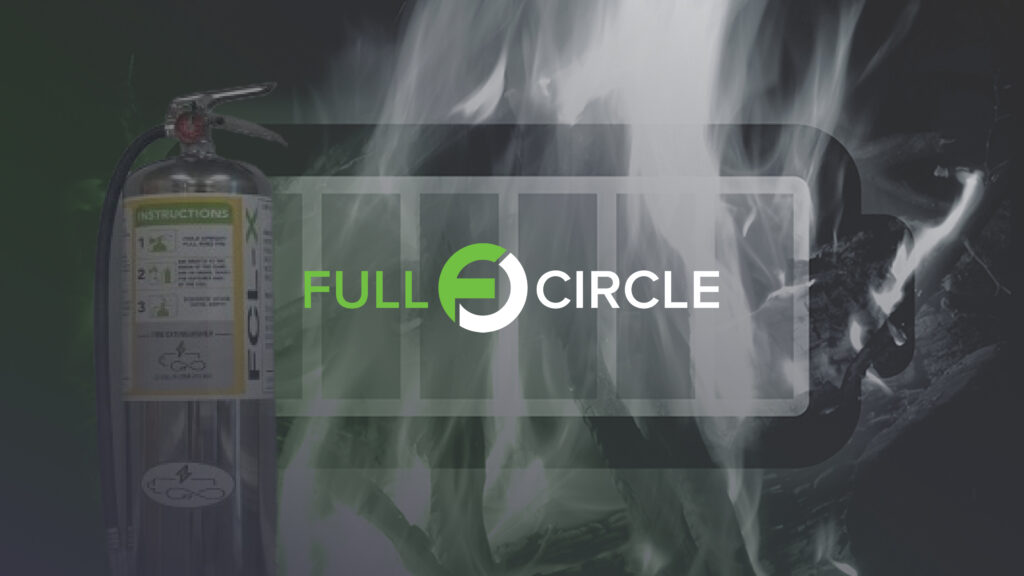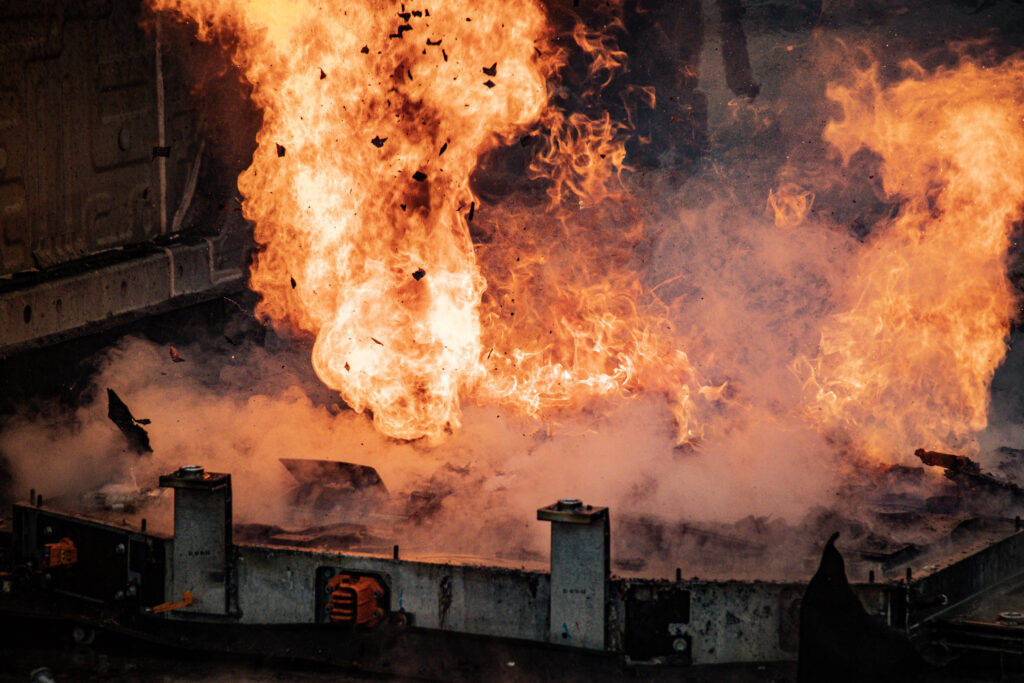Overview
Lithium-ion batteries now power everything from smartphones to grid-scale energy systems. Their high energy density makes them essential for modern life, but it also creates a significant risk: thermal runaway and lithium-ion battery fires. When these fires occur, they burn hotter, produce toxic gases, and can reignite long after they appear to be under control. That’s why lithium-ion battery fire suppression is becoming a critical concern across industries.
This case study examines how various sectors, ranging from manufacturing to healthcare, are addressing the increasing risks of lithium-ion fire safety through tailored protection strategies.
1. Manufacturing & Warehousing
Use Case: Bulk Battery Storage and Assembly Lines.
Risk Profile: High fire load with potential chain-reaction events.
Suppression Strategy:
- PFAS-free, non-residue extinguishing agents safe for enclosed spaces.
- Heat and gas detection systems for early warning.
- Segmented storage zones to limit fire spread.
Impact: Lower insurance premiums, compliance with NFPA 855 lithium-ion storage standards, and reduced downtime.
2. Energy Storage Systems (ESS)
Use Case: Utility-scale battery farms and commercial backup systems.
Risk Profile: High thermal mass with potential for cascading battery failures.
Suppression Strategy:
- Zoned suppression using clean agents or water mist.
- UL 9540A-tested enclosures proven for lithium-ion fire containment.
- Integration with battery management systems (BMS).
Impact: Enhanced grid reliability, smoother regulatory approvals, and stronger investor confidence.
3. Electric Vehicles (EVs) & Charging Infrastructure
Use Case: EV fleets, public charging stations, and parking garages.
Risk Profile: Fires during charging or post-collision, often in confined spaces.
Suppression Strategy:
- Localized suppression at charging points.
- Thermal imaging and gas sensors to detect early signs of failure.
- Fire-rated enclosures for EV battery packs.
Impact: Safer charging infrastructure, reduced liability, and stronger brand protection.
4. Data Centers & Telecom
Use Case: UPS Systems and Battery Banks.
Risk Profile: A lithium-ion fire could damage servers and result in costly downtime.
Suppression Strategy:
- Clean-agent suppression that won’t damage electronics.
- Redundant fire detection systems.
- Automatic shutdown protocols.
Impact: SLA compliance, zero downtime, and asset protection.
5. Micro-Mobility & Consumer Electronics
Use Case: E-bikes, scooters, laptops, and phones.
Risk Profile: Charging or impact fires in transit or storage, often in bulk.
Suppression Strategy:
- Portable suppression kits for vehicles and logistics.
- Fire-resistant packaging.
- Zoned warehouse storage with strong ventilation.
Impact: Safer logistics chains, regulatory compliance, and reduced product recalls.
6. Healthcare & Industrial Equipment
Use Case: Battery-powered diagnostic tools, robotics, and hospital systems.
Risk Profile: Fire could interrupt life-critical operations.
Suppression Strategy:
- Non-residue, PFAS-free fire suppression agents safe for labs and ORs.
- Isolation and Containment Protocols for Failing Lithium-Ion Batteries.
- Staff training and emergency procedures.
Impact: Improved patient safety, operational continuity, and compliance with healthcare safety regulations.
Conclusion
Every sector faces unique challenges related to the risk of lithium-ion battery fires. Tailored suppression strategies, particularly those utilizing clean, PFAS-free agents like FCL-X, are crucial for ensuring safety, compliance, and continuity.
As battery adoption accelerates in EVs, energy storage, and consumer electronics, proactive lithium-ion fire protection is no longer optional. It’s a competitive advantage for industries, municipalities, and organizations committed to safety.






